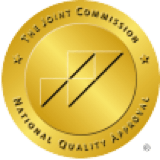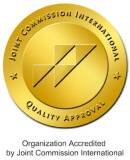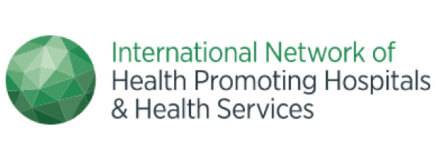Heart disease is one of the leading global health issues, affecting people of all ages. It encompasses a variety of conditions, including coronary artery disease, arrhythmias, and congenital heart disease, each with distinct symptoms, causes, and treatment methods. This article will explore the current state of heart disease, its symptoms, causes, diagnosis, and treatment options, while providing effective prevention tips to help you better understand heart health and reduce the risk of disease.
Epidemiology
Heart disease is the third most common cause of death in Hong Kong. In 2023, 4,110 people died from coronary heart disease, accounting for 7.2% of all deaths. Males accounted for the majority of deaths, with a male-to-female ratio of 1.9:1.
What is Heart Disease?
Heart disease generally refers to various heart-related diseases, including coronary heart disease, arrhythmia, rheumatic heart disease, congenital heart disease, and etc. Coronary heart diseases account for the most heart disease deaths.
Symptoms
Patients with heart disease usually develop angina after strenuous exercise. The pain may spread to the arms, shoulders, neck, or jaw, and symptoms are relieved with rest. However, as the disease progresses, the degree of angina pectoris will intensify and the duration of symptoms will increase.
Symptoms of Vascular-Related Heart Disease
Vascular heart diseases, such as coronary artery disease, are primarily caused by arterial blockages or restricted blood flow, leading to insufficient oxygen supply to the heart. Common symptoms include:
- Chest pain or tightness (angina): A feeling of pressure, burning, or stabbing pain in the chest, often worsening during physical activity or emotional stress.
- Shortness of breath: Difficulty breathing during rest or activity due to the heart’s inability to pump blood effectively.
- Extreme fatigue: Poor blood circulation can result in insufficient oxygen supply, causing unusual tiredness.
- Dizziness or fainting: Reduced blood flow to the brain may cause lightheadedness or loss of consciousness.
- Swelling in the hands, feet, or lower limbs: Impaired blood circulation can lead to fluid buildup, causing swelling in the ankles, legs, or hands.
If these symptoms occur, seek medical attention promptly to prevent serious complications such as myocardial infarction (heart attack) due to vascular blockages.
Symptoms of Arrhythmia-Related Heart Disease
Arrhythmias refer to abnormal heart rhythms, where the heart beats too fast, too slow, or irregularly, often caused by abnormal electrical signals, structural heart issues, or other diseases. Symptoms include:
- Palpitations: Feeling irregular, rapid, or skipped heartbeats, as if the heart momentarily "pauses."
- Dizziness or fainting: Slow heart rates (e.g., bradycardia) may reduce blood flow to the brain, causing lightheadedness or brief loss of consciousness.
- Chest tightness or discomfort: Abnormal heart rhythms can impair blood supply, leading to a sensation of pressure or pain in the chest.
- Reduced exercise tolerance: Patients may experience shortness of breath, fatigue, or exhaustion during mild activity, limiting prolonged physical exertion.
Some arrhythmias are benign, but frequent occurrences or severe symptoms require professional diagnosis and treatment.
Symptoms of Congenital Heart Defect-Related Heart Disease
Congenital heart disease refers to structural abnormalities of the heart present at birth, with severity varying depending on the type of defect. Possible symptoms include:
- Cyanosis (oxygen deficiency): Due to insufficient oxygen in the blood, infants or children may exhibit blue-tinted lips, nails, or skin.
- Growth delays: Inadequate oxygen and nutrient delivery by the heart can lead to slowed growth and development in children.
- Recurrent respiratory infections: Impaired heart and lung function may increase susceptibility to pneumonia or other infections.
- Extreme fatigue or shortness of breath after exercise: Even mild activity can cause significant tiredness or breathing difficulties.
Symptoms of Cardiomyopathy-Related Heart Disease
Cardiomyopathy affects the structure and function of the heart muscle, impairing its ability to pump blood effectively. Common symptoms include:
- Persistent fatigue and weakness: Due to inadequate blood supply, the body may feel constantly tired.
- Shortness of breath: Breathing difficulties may occur even at rest, particularly when lying flat at night.
- Lower limb swelling: Reduced heart pumping capacity can cause fluid buildup in the ankles, legs, or abdomen.
- Irregular heart rhythms: The heart may beat too fast, too slow, or irregularly, potentially increasing the risk of cardiac arrest.
- Chest pain or discomfort: A sensation of pressure in the chest may occur, especially during exercise or increased stress.
Cardiomyopathy may be caused by genetics, viral infections, hypertension, or other chronic conditions. Early diagnosis and treatment are recommended to reduce the risk of complications.
Symptoms of Heart Valve Disease-Related Heart Disease
Heart valve disease affects the normal opening and closing of heart valves, leading to obstructed or backward blood flow, which may cause the following symptoms:
- Shortness of breath: More pronounced during activity or when lying flat, due to impaired blood flow affecting lung circulation.
- Palpitations or chest tightness: Valve abnormalities may cause irregular heart rhythms or increased heart strain.
- Lower limb swelling and fluid retention: Swelling in the ankles or legs, and in severe cases, the abdomen, due to fluid buildup.
- Dizziness or fainting: Inadequate blood supply to the brain may result in lightheadedness or brief loss of consciousness.
- Extreme fatigue and reduced exercise tolerance: Even routine activities may cause unusual tiredness.
Heart valve disease can be managed with medications or surgery, and severe cases may require valve repair or replacement.
Classification of Heart Disease
Heart disease encompasses a range of conditions that affect the heart’s structure and function, covering multiple types. Based on causes and affected areas, heart diseases can be broadly categorized as follows:
- Coronary Artery Disease (Ischemic Heart Disease): Caused by atherosclerosis leading to blocked or narrowed arteries, resulting in insufficient blood supply to the heart. This can cause chest pain, shortness of breath, and, in severe cases, myocardial infarction (heart attack).
- Arrhythmias: Abnormal heart rhythms that are too fast, too slow, or irregular, potentially causing palpitations, dizziness, and, in severe cases, impaired heart function.
- Congenital Heart Disease: Structural heart abnormalities present at birth that may affect blood circulation, with severe cases requiring surgical intervention.
- Cardiomyopathy: Abnormalities in the heart muscle that impair its ability to pump blood, leading to fatigue, shortness of breath, and potentially heart failure.
- Heart Valve Disease: Malfunctioning heart valves causing disrupted blood flow, which may result in shortness of breath, palpitations, and swelling.
Different types of heart disease have varying impacts on health. Regular check-ups and maintaining a healthy lifestyle can help prevent heart disease. If symptoms are suspected, seek medical diagnosis promptly.
Different heart diseases have different causes. Excluding congenital factors, most heart disease is caused by excessive cholesterol buildup in the coronary arteries, which narrows the arterial lumen and reduces blood supply to the myocardium, resulting in heart disease symptoms, such as angina etc. In addition, there are many other factors that can lead to heart disease.
Risk Factors
- Age
- Male
- Genetics
- Hypertension
- Hyperlipidemia
- Obesity
- Diabetes
- Smoking
- Lack of exercise
- Bad eating habits
- Chronic stress
Complications of Heart Disease
If heart disease is not diagnosed and treated in a timely manner, it can lead to various serious complications that affect the function of major bodily systems and may even be life-threatening. Here are some common complications of heart disease:
- Myocardial Infarction
When the coronary arteries are severely narrowed or completely blocked, the heart muscle cannot receive enough blood supply, leading to the death of heart muscle cells and resulting in a myocardial infarction (heart attack). Patients may experience severe chest pain, shortness of breath, cold sweats, or nausea. In severe cases, it can lead to sudden death and requires emergency treatment. - Heart Failure
Heart failure refers to a decrease in the heart's pumping function, making it unable to effectively supply blood circulation throughout the body. Patients may experience persistent fatigue, shortness of breath, and swelling in the lower limbs. In severe cases, it can significantly affect daily life and activity levels. Long-term high blood pressure, coronary artery disease, or cardiomyopathy can all lead to heart failure. - Arrhythmia
Abnormal electrical signals in the heart can lead to arrhythmia, resulting in a heartbeat that is too fast, too slow, or irregular. Some arrhythmias may be mild, but in severe cases, such as atrial fibrillation or ventricular fibrillation, they can increase the risk of stroke or sudden death. - Stroke
Certain heart conditions, especially atrial fibrillation, can lead to the formation of blood clots. When a clot travels through the bloodstream to the brain and blocks a blood vessel, it can cause an ischemic stroke. A stroke can result in paralysis, speech difficulties, mobility issues, and may even affect cognitive function and quality of life. - Heart Valve Disease
Heart valves are responsible for controlling the direction of blood flow. When a valve becomes narrowed or fails to close properly, it can lead to obstructed or regurgitant blood flow, thereby affecting heart function. Patients may experience symptoms such as shortness of breath, palpitations, and chest pain. In severe cases, surgical intervention may be required, such as valve repair or replacement. - Peripheral Artery Disease
Patients with cardiovascular disease may also suffer from peripheral artery disease (PAD), which affects blood circulation in the limbs. This can lead to leg pain, difficulty walking, and wounds that are slow to heal. In severe cases, it can increase the risk of tissue necrosis and limb amputation.
When to Seek Medical Attention
Heart disease is a common and serious condition, with symptoms that can vary by type. However, certain signs require special attention. If you experience any of the following symptoms, you should seek medical help immediately:
- Chest Discomfort: This includes chest pain, pressure, tightness, or angina, especially if it worsens with activity.
- Shortness of Breath: Experiencing breathlessness at rest or with minimal activity, possibly accompanied by coughing or rapid breathing.
- Irregular Heartbeat: Feeling a heartbeat that is too fast, too slow, or irregular, which may be accompanied by dizziness or lightheadedness.
- Other Symptoms: Such as pain in the neck, jaw, arms, or back, cold sweats, nausea or vomiting, and pale skin.
These symptoms may indicate a heart attack or other serious heart issues, such as myocardial infarction or heart failure. Timely medical attention can improve treatment success rates and reduce the risk of complications.
Additionally, if you have risk factors for heart disease, such as high blood pressure, high cholesterol, diabetes, obesity, smoking, or a family history, you should have regular heart health check-ups to detect and manage potential issues early.
Treatment methods vary depending on the type of heart disease.
- Coronary Heart Disease : Can be treated with different methods. If the condition is mild, the symptoms can be relieved by changing lifestyle habits. In cases of chronic coronary heart disease. Antiplatelet drugs can reduce the risk of acute vascular embolism and heart disease. For serious conditions that affect daily life, it may be necessary to undergo angioplasty surgery.
- Arrhythmia : Ablation is a common procedure used to treat atrial fibrillation. It employs various methods, such as thermal energy, cryotherapy, or electrical energy, to eliminate cardiac cells responsible for abnormal heart rhythms, thereby restoring normal heart rhythm. Pulsed Field Ablation (PFA) is an emerging ablation technique. Unlike traditional thermal or cryoablation, PFA utilizes high-voltage electric fields to generate intense energy in a very short time, directly penetrating cell membranes and causing cell death. Other treatment options include the implantation of a cardiac defibrillator or the use of anticoagulant medications.
- Valve disease or cardiac muscle disease : The patient’s heart valve may be damaged from inflammation. Depending on the condition, a doctor will decide whether to allow the patient to undergo heart muscle treatment, repair the valve, or replace it entirely to restore valve function.
If you or your friends are looking for professional cardiac examination, diagnosis, or treatment services, you can visit the Hong Kong Heart Centre to learn more and make an appointment.
Heart Disease Prevention
Preventing heart disease starts with daily habits that lower risk through healthy practices. Here are some effective preventive measures:
- Maintain a Healthy Diet
Maintaining a healthy diet is one of the key measures to prevent heart disease. It is recommended to choose a low-fat, low-salt, and high-fiber diet, such as consuming plenty of fruits, vegetables, whole grains, lean meats, and fish. Additionally, avoid excessive intake of processed foods, red meat, and high-sugar foods to reduce the risk of elevated cholesterol and blood pressure. - Regular Exercise
Regular exercise is crucial for heart health. It is recommended to engage in at least 150 minutes of moderate aerobic activity each week, such as brisk walking, swimming, or cycling, which helps maintain cardiovascular health. Additionally, avoid prolonged sitting; incorporate stretching exercises or increase daily activity levels to promote overall blood circulation and reduce the risk of heart disease. - Control Weight and Blood Pressure
Controlling weight and blood pressure is an important measure to prevent heart disease. It is essential to maintain a healthy weight and avoid obesity, as excess weight increases the strain on the heart and raises the risk of heart disease. Additionally, regularly monitor blood pressure, blood sugar, and cholesterol levels, and follow your doctor’s recommendations for health management to ensure these indicators remain within normal ranges, effectively reducing the likelihood of heart disease. - Avoid Unhealthy Habits
Staying away from unhealthy habits is also crucial for heart health. First, quit smoking, as it damages vascular health and increases the risk of atherosclerosis, directly affecting heart function. Additionally, consume alcohol in moderation to avoid negative impacts on blood pressure and heart function. These changes can significantly reduce the risk of heart disease and improve overall health. - Manage Stress and Get Enough Sleep
In daily life, it is important to maintain good emotional management by using techniques such as deep breathing, meditation, or exercise to reduce stress. These methods can effectively lessen the negative impact of stress on the heart. Additionally, ensure you get 7 to 9 hours of adequate sleep each night, as this not only helps with physical and mental recovery but also supports heart health and reduces the risk of heart disease. - Regular Health Check-ups
High-risk individuals (such as those with a family history of heart disease, hypertension, or diabetes) should have regular cardiovascular health check-ups to detect potential issues early. Through routine examinations, it is possible to monitor important indicators such as blood pressure, lipid levels, and blood sugar. When necessary, additional tests like electrocardiograms or echocardiograms can be performed, effectively reducing the risk of developing heart disease.
FAQ
Why Do High Cholesterol, Diabetes, and Obesity Increase the Risk of Heart Disease?
High cholesterol, diabetes, and obesity are significant risk factors for heart disease for the following reasons:
- High Cholesterol: It can lead to the formation of plaques in the arterial walls, narrowing the arteries and reducing blood flow to the heart, which can trigger coronary heart disease.
- Diabetes: High blood sugar can damage blood vessels, accelerate atherosclerosis, and increase blood viscosity, putting additional strain on the heart.
- Obesity: It can lead to hypertension, high cholesterol, and diabetes, increasing the workload on the heart and raising the risk of heart disease.
Controlling these factors is essential for preventing heart disease.
How Much Exercise Is Suitable for Heart Disease Patients?
Before engaging in exercise, heart disease patients should consult their doctor and create a suitable exercise plan based on their individual health conditions. General recommendations include:
- Type of Exercise: Focus on aerobic activities, such as brisk walking, jogging, or cycling.
- Exercise Intensity: Choose moderate-intensity exercises, avoiding overly vigorous activities.
- Exercise Duration: Aim for 30 to 60 minutes per session, at least 3 to 5 times a week.
- Exercise Principle: Progress gradually, avoiding sudden increases in activity, and pay attention to how your body responds. If any discomfort occurs, stop immediately and seek medical advice.
Exercise offers many benefits for heart disease patients, including improved cardiovascular function, lower lipid and blood sugar levels, and weight management, but it must be done under medical guidance to ensure safety and effectiveness.
Is the Risk of Heart Disease Lower in Women Compared to Men?
Women do have a relatively lower risk of heart disease before menopause, primarily due to the protective effects of estrogen on the cardiovascular system. However, after menopause, the risk of heart disease for women significantly increases, approaching that of men. Additionally, the symptoms of heart disease in women are often less typical than in men, which can lead to them being overlooked and result in delayed diagnosis and treatment. Therefore, women should pay special attention to heart health after menopause, maintain a healthy lifestyle, and have regular cardiovascular check-ups.
































